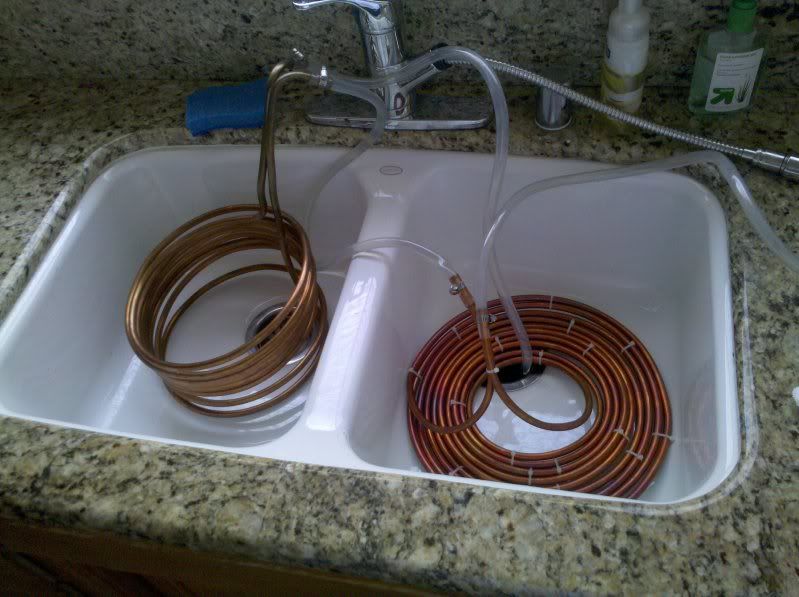OK, so here's the short version. I have about 50' of 1/4"od copper tubing at my disposal and would like to build a wort chiller. I have seen the immersion-style, and recognize that this would be fairly easy to pull off.
I have also seen some that drain the wort from the boil kettle through the copper tubing that is coiled (just like an immersion chiller) in an ice bath, then drained to the primary.
So essentially the difference as I see it is that you either run hot wort through the tubing with an ice bath cooling it from the outside of the tubing, or you run cool water through the tubing and it pulls heat from the hot wort.
Keep in mind that if I am to build a standard immersion style chiller, I will be relegated to using tap water only (no recirculating pumps out of ice baths), and so will have only cool/lukewarm water.
So, which one is better, and why? Opinions? Bring 'em on.
I have also seen some that drain the wort from the boil kettle through the copper tubing that is coiled (just like an immersion chiller) in an ice bath, then drained to the primary.
So essentially the difference as I see it is that you either run hot wort through the tubing with an ice bath cooling it from the outside of the tubing, or you run cool water through the tubing and it pulls heat from the hot wort.
Keep in mind that if I am to build a standard immersion style chiller, I will be relegated to using tap water only (no recirculating pumps out of ice baths), and so will have only cool/lukewarm water.
So, which one is better, and why? Opinions? Bring 'em on.




 OK, had an epiphany yesterday. I cut all gas to the house about 4 years ago, and the old gas line is all flexible copper. Dug it up. Now I have about 30' of 1/2"id and about 25' of 1/4"id. Going to use the 1/2" in a prechill bucket, then pipe it to the 1/4" coiled in the brew kettle. Sweetness.
OK, had an epiphany yesterday. I cut all gas to the house about 4 years ago, and the old gas line is all flexible copper. Dug it up. Now I have about 30' of 1/2"id and about 25' of 1/4"id. Going to use the 1/2" in a prechill bucket, then pipe it to the 1/4" coiled in the brew kettle. Sweetness. 